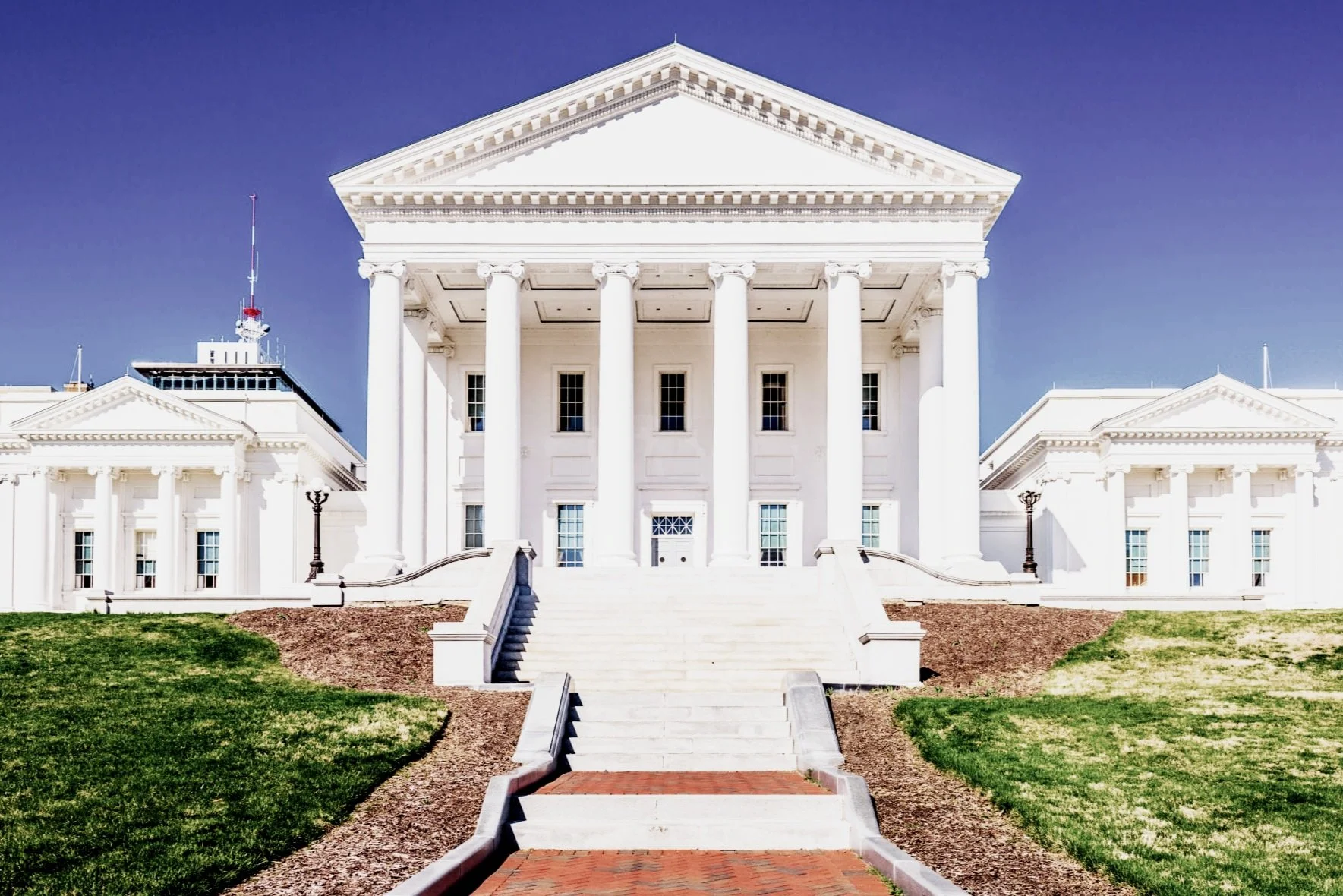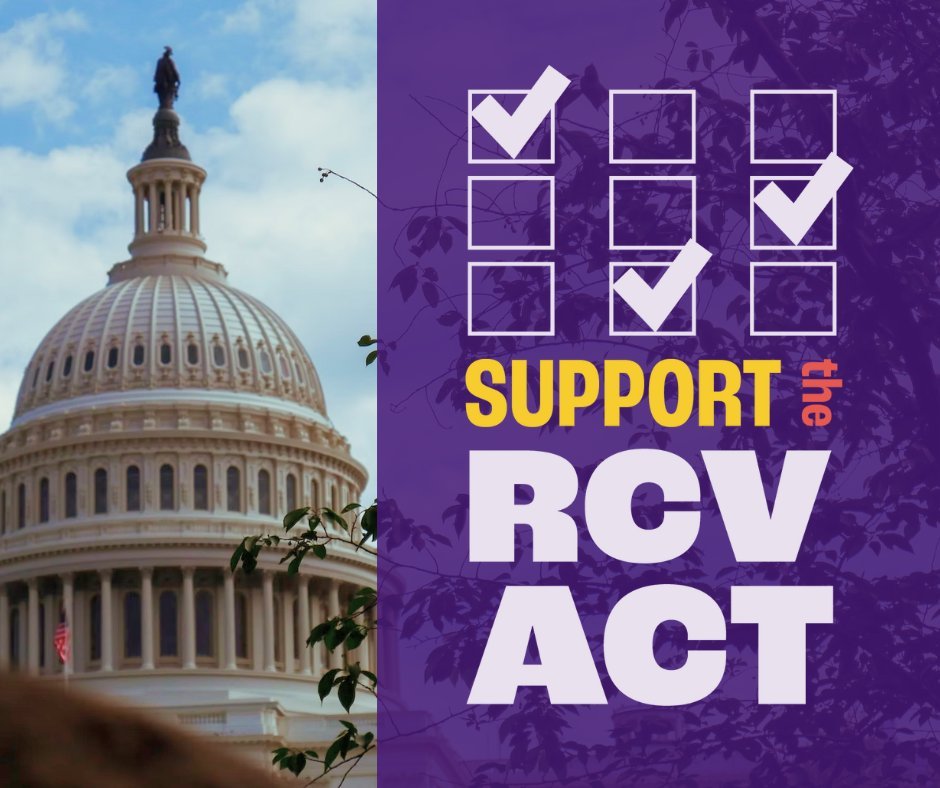KEY FOCUS AREA
RANKED CHOICE VOTING
Ranked Choice Voting is a simple change to the ballot that enables a better voting experience, better campaigns, and ultimately, better government. It allows voters to more fully express their preference and rewards candidates who build coalitions, not those who rely on a narrow base of voters.
Instead of only choosing one candidate, RCV allows voters to rank their order of preference: first, second, third, etc. In races with more than two people on the ballot, this creates an instant runoff, with the lowest-ranked candidate getting eliminated and voters who selected that candidate instead have their second-choice votes counted. The winner is ultimately declared when a candidate receives over 50% of vote. Majority rule. (See video below for more details.)
In recent years, RCV has gained momentum in states and localities across the country – including right here in Virginia, where both parties have embraced this reform. RCV was used by the Republican Party of Virginia in its statewide nominating elections in 2021, and Arlington just became the first locality to adopt RCV for their County Board primaries.
At our launch event in August 2022, we were joined by Congressman Don Beyer (D) and former Governor George Allen (R), both of whom are strong RCV supporters. This issue is truly bipartisan - it doesn’t benefit one party over another. It benefits voters.
In 2020, the General Assembly passed HB1103, which gives cities and counties an option to adopt an RCV pilot program for local governing bodies like city councils or boards of supervisors. We are working to expand this scope (see current RCV bills below) and empowering localities to implement this option.
We will be partnering with local, statewide, and national organizations to ensure that localities take advantage of this unique opportunity, and that voters know more about RCV moving forward.
We want your support! Sign our petition in support of Ranked Choice Voting!
TL;DR
Here’s a two and a half minute overview of RCV.
Watch now and share it with a friend!
Benefits of RCV
#1. RCV ensures winners with majority support.
In a crowded field, traditional plurality elections often result in a winner with only 20-30% of the vote, which means that 70-80% of voters voted for someone else! RCV allows voters to express support for multiple candidates and tabulates votes until a candidate reaches the 50%+ threshold.
#2. RCV rewards candidates who build consensus.
Candidates are required to appeal to a broader coalition of voters, beyond just their base. They will need a combination of first and second place votes to win so they must reach out and attract new supporters.
#3. RCV diminishes negative campaigning.
Candidates are disincentivized from mudslinging, since they will need second place votes from supporters of their opponents if they’re going to win! Negative campaigning alienates voters and makes it much harder to build that coalition needed for victory.
#4. No spoilers!
Because you get to rank more than one preference, there’s no possibility of “vote-splitting.” Voters don’t have to be pundits - they can vote for the person they truly support without worrying that they’re siphoning votes away from anyone else. No candidate will be told to “wait their turn,” which allows more candidates to get in the race.
#5. RCV elects more “non-traditional” candidates.
For a variety of reasons, RCV has been shown to elect more candidates who are BIPOC, women, and/or younger. Without the spoiler effect, more women and people of color run for office. And because there’s no vote-splitting, there’s no electoral disadvantage to more than one person running from a particular demographic.
Check out FairVote’s report “Ranked Choice Voting Elections Benefit Candidates and Voters of Color”
Check out Represent Women’s report “In Ranked Choice Elections, Women WIN”
Want to know more?
Try RCV for yourself
Fill in the bubbles below to indicate your favorite pizza toppings! You are not required to rank more than one option, but you are allowed to rank up to five.
If change your mind, just unclick the bubble.
When you’re finished, click “Vote” to see the results of the election so far.
Created by RCV123.org
myth busters: RCV
-
This is the most common objection to RCV, but it’s not supported by any data. We all know how to rank - we rank our preferences every day. Voter education is crucial, but exit polls from across the country show that voters who have used RCV like and understand RCV.
-
This is a legitimate concern, but it’s not applicable to most of Virginia. All but one locality already has voting machines with that can support some kind of RCV. The RCV Resource Center offers a free open-source tabulation tool for counting RCV votes so there’s no hardware or software costs for most parts of the state. The remaining costs are associated with voter education efforts and practical concerns like potentially needing to print a longer ballot.
-
If done with a computer, RCV elections can be tabulated as quickly as traditional plurality elections - instant results! We are used to thinking about the Alaska RCV election, which was tabulated over a period of weeks, but that was specific to Alaska laws that allow ample time for all ballots to arrive from around a vast and rural state. The VA GOP primary in 2021 also had a delay in their results, but they had opted to count all ballots by hand, which took longer but also assuaged any election integrity concerns.
-
Every data set about RCV shows the exact opposite. RCV has been shown to elect more female candidates and candidates of color than plurality elections. RCV eliminates vote-splitting (see above) so having two candidates from the same demographic does not diminish their chances of winning.
-
Come-from-behind wins are rare in RCV. In the past, only 4% of RCV elections resulted in a come-from-behind winner. The greatest “comeback” margin in an RCV tabulation was ten points (i.e. the ultimate winner trailed the 1st-choice leader by ten points) so a lack of a comeback win in this race matches expectations. Candidates must have both deep (enough first place votes to make it past early ballots) and wide (enough appeal to voters to gain 2nd and 3rd place votes) support to win.
PARTNER ORGS for RCV
ADDITIONAL RESOURCES
LOCAL EFFORTS IN VIRGINIA
Stay in the loop with UpVote Virginia

















































